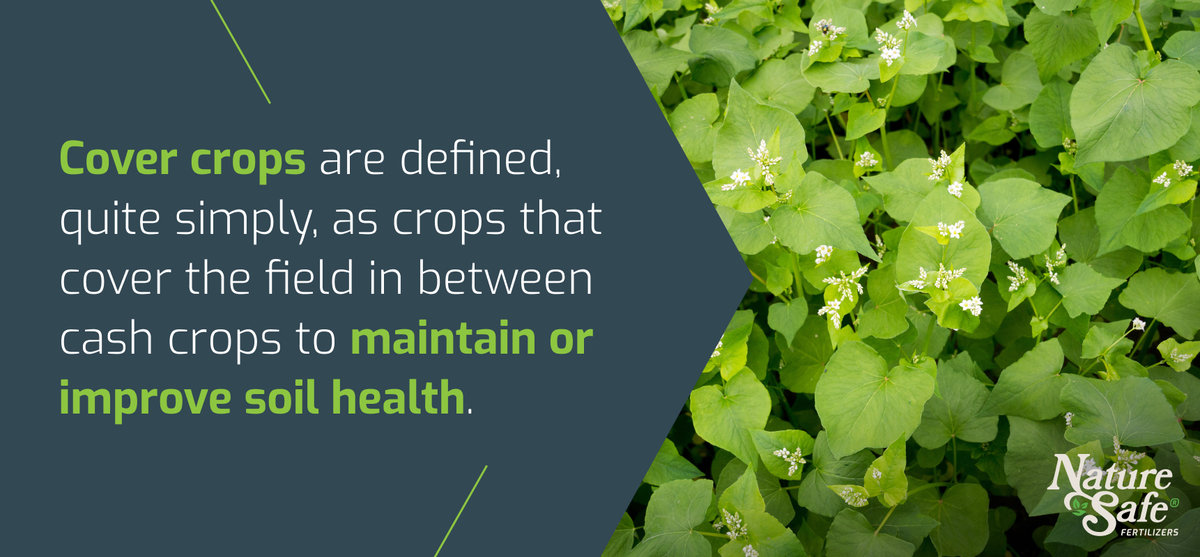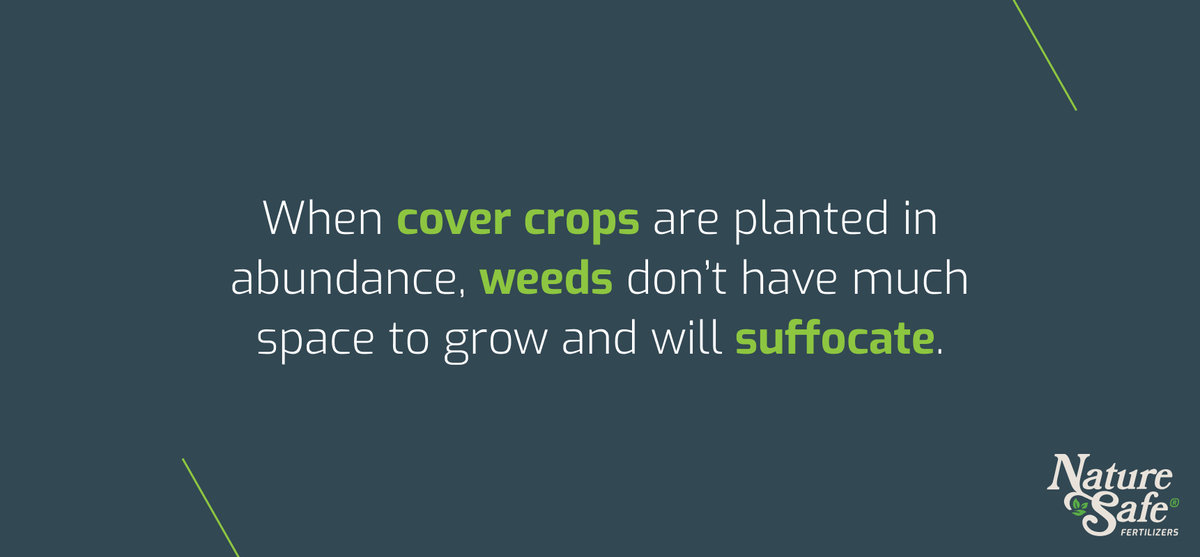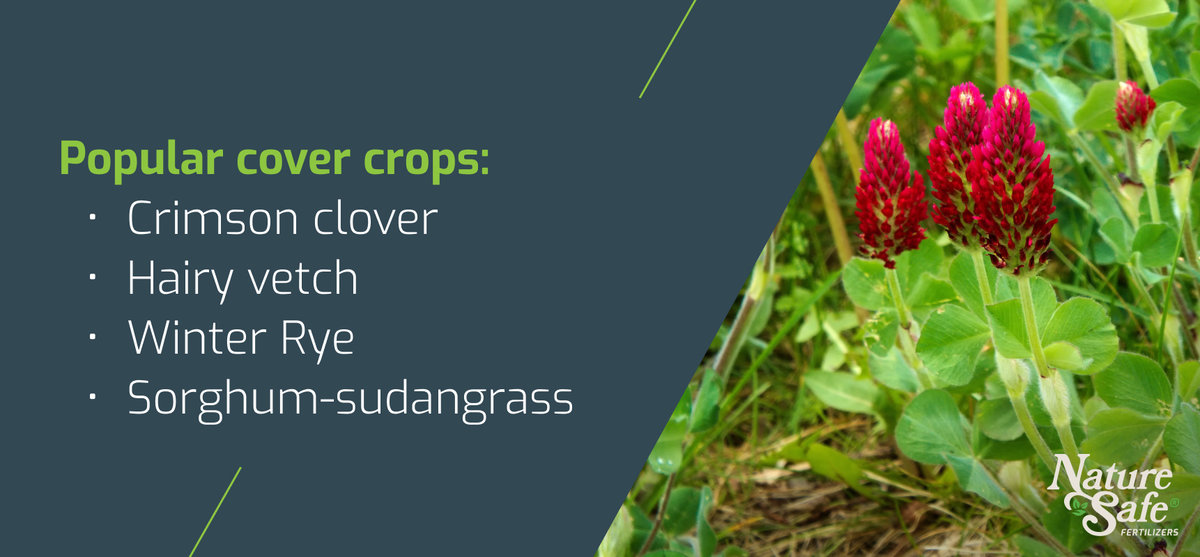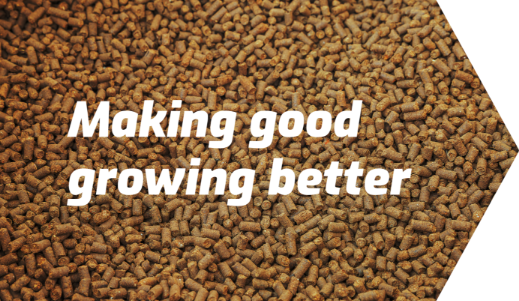
One of the central practices of regenerative agriculture is the utilization of cover crops. It’s a great, easy way to maintain the soil and pack it full of nutrients. Cover cropping is good for home gardeners and commercial farmers alike.
What are Cover Crops?
Cover crops aren’t really a specific type or species of plant. In fact, many different families of plants work well as cover crops. Cover crops are defined, quite simply, as crops that cover the field in between cash crops to maintain or improve soil health.
According to the Rodale Institute, cover crops will ideally have three tons of above-ground biomatter per acre. In order to do their job most effectively, these plants should act like a blanket over the soil. Some favorite cover crops can grow very densely, and often have lots of leaves and foliage.
Cover crops serve many different purposes. They suppress weeds, help retain moisture, and provide food and shelter for good bugs and animals that help with pest control. They can do all of this and provide life-giving nutrients, all without harsh chemicals.

What Are the Different Uses for Cover Crops?
With the many types of small crops and grasses to choose from, knowing what to plant and when is important. Not every plant can be a cover crop, and each cover crop is better suited for certain tasks than others.
Which one you choose often comes down to what your goals are with cover cropping. The general end goal is better soil health. The cover cropping practice, however, can achieve this in many different ways, such as moisture control, nitrogen fixation, erosion control, and weed control.
Nitrogen Fixation
One of the most important macronutrients for young plants is nitrogen. In order to grow healthy, full leaves and vegetation, crops need a healthy supply of nitrogen during the first stages of growth.
Legumes are especially good at absorbing nitrogen and redistributing it to the soil. This process is called nitrogen fixation. Planting legumes, such as beans, peas, and vetch, in between planting seasons can ensure that the young cash crops have the nitrogen that they need.
Sometimes planting a legume alongside other crops, like certain grasses, can create a slower release of nitrogen and add coverage that one cover crop alone couldn't achieve.
Erosion Control
Bare fields can be subject to erosion from rainfall or other inclement weather. Soil loss is not only detrimental to the financial output of the field, but large soil movement can hurt the ecology of the soil, lowering its fertility.
By covering the soil with vegetation, the effects of the weather can be mitigated. The roots can provide structure to the soil to prevent movement, and the impact of rain will be softer and more evenly distributed.
Moisture Retention
Just like bare fields are more prone to soil erosion, they are also susceptible to water runoff and evaporation. Cover crops will not only keep the moisture where the cash crops can reach it, but the coverage they provide helps prevent evaporation on hot days.
Weed and Pest Control
Cover crops prevent weeds in two ways: When they are planted in abundance, weeds simply don’t have much space to grow. They suffocate. Some farmers will have cover crops planted at the same time as the cash crop to keep weeds at bay. Lush cover crops in the off seasons will have the same effect.
Cover crops can also provide a home and food for the good bugs and small animals that help keep pests away.

No-Till Cover Crops vs. Green Manure
If you are doing cover crops in between each growing season, there are two ways that you can utilize them once you are ready to plant your cash crop.
The first is by letting them die. It sounds neglectful, but it does serve a purpose. Whether by harsh weather in the summer or winter or a roller-crimper, the crops are done distributing nutrients, but still provide valuable coverage. Instead of tilling the dead plants into the soil, they are left on top to protect against pests and weeds.
Green Manure
Instead of letting the cover crops die, the other option is to till them into the soil while they are still alive. This creates what is called green manure. This serves the purpose of sending nutrients straight into the soil instead of providing coverage.
Green manure is an easy way to get a quick blast of nutrients into your soil immediately before planting. This practice is more prevalent among home gardeners, but it is not uncommon for commercial farmers to use.
What are the Best Cover Crops?
The answer to that question depends largely on where your location and time of year. Luckily, there are some basic guidelines that are consistent across the board.
Some of the most popular and versatile cover crops include:
- Crimson Clover
- Hairy Vetch
- Winter Rye
- Sorghum-Sudangrass
Legumes, such as the clover and vetch, are particularly good at nitrogen fixation, but the rye and its expansive roots are good for moisture and erosion control. Because so many cover crops excel in different ways, they often work well when multiple different varieties are planted together.

Let’s Make Good Growing Better
Cover crops are wildly useful for farmers all across the country, but they are just one part of creating healthy soil for healthy crops.
If you’re just starting using cover crops or switching what is in your field, consider Nature Safe’s nitrogen-rich organic fertilizers for your commercial organic farming needs. We’ll work with you to find the formula best suited for your needs. Reach out today! Call us at 800-743-7413.
